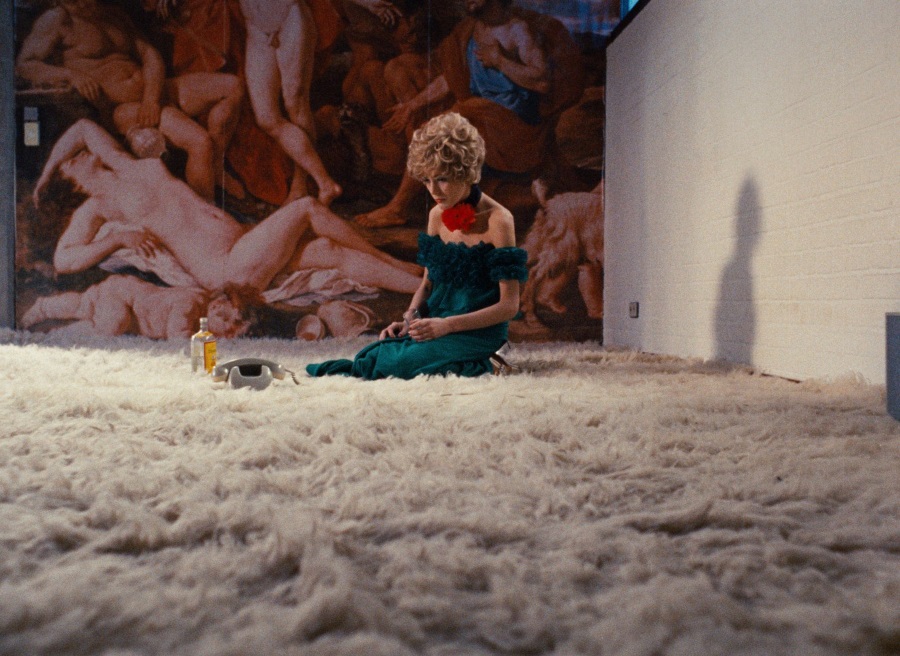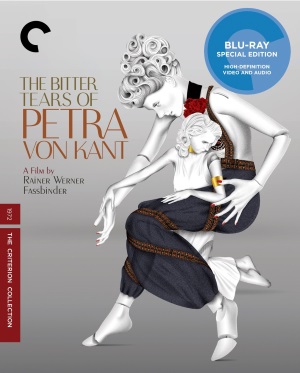 The Bitter Tears of Petra Von Kant (Criterion, Blu-ray, DVD) – Rainer Werner Fassbinder adapted his own stage play for this modern twist on The Women, the great all-woman Hollywood classic of sex and social conventions in high society. Margit Carstensen is successful fashion designer Petra von Kant, who lives alone in her stark apartment with Marlene (Irm Hermann), her silent, obedient secretary / servant / girl Friday, whom she alternately abuses and ignores.
The Bitter Tears of Petra Von Kant (Criterion, Blu-ray, DVD) – Rainer Werner Fassbinder adapted his own stage play for this modern twist on The Women, the great all-woman Hollywood classic of sex and social conventions in high society. Margit Carstensen is successful fashion designer Petra von Kant, who lives alone in her stark apartment with Marlene (Irm Hermann), her silent, obedient secretary / servant / girl Friday, whom she alternately abuses and ignores.
Once divorced—by her decision, as she proudly describes the experience to her friend the countess—and once widowed, leaving her a grown child (she at one point berates parents who don’t raise their children properly, then explains she hasn’t the time for her child but takes comfort in knowing she is at the best schools), she falls in lust with a callow, shallow, lazy young married woman, Karin (Hanna Schygulla) who left her husband in Australia to return to Germany. Petra treats the seemingly naïve blonde beauty as part protégé, part pet, but the calculating kitten takes Petra’s money and gifts and social introductions with a cold calculation.
It all plays out in Petra’s stark apartment—a bedroom/workroom with a bed on white shag and a work area below with naked dress dummies, an easel and a typewriter—and Michael Ballhaus’ prowling camera finds Marlene silently hovering on the borders of Petra’s dramas, looking on through doors and windows like an adoring lover from afar. Handsome with a touch of aloofness (the dress dummies sprawled through each scene add a note of alienation), it’s a quintessentially Fassbinder portrait of doomed love, jealousy, and social taboos, bouncing between catty melodrama and naked emotional need.
Cinematographer Michael Ballhaus oversaw the digital restoration, mastered in 4K from the original camera negative and supervised by the Rainer Werner Fassbinder Foundation. It’s a tremendous leap in quality from the previous DVD release a decade ago, with strong color (essential to appreciate the art direction and lighting) and a great level of detail and crispness. The Criterion debut of the film features a new video interviews with Ballhaus and the original featurette “Outsiders” featuring new interviews with actors Margit Carstensen, Eva Mattes, Katrin Schaake, and Hanna Schygulla, plus a new interview with film scholar Jane Shattuc about director Rainer Werner Fassbinder and the film, and the 1992 documentary Role Play: Women on Fassbinder, originally made for German TV and featuring interviews with Carstensen, Schygulla, and actors Irm Hermann and Rosel Zech. It includes a foldout insert in place of a booklet with an essay by critic Peter Matthews.
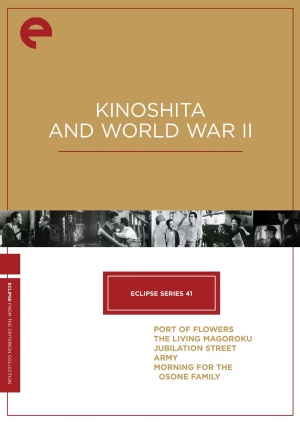 Japanese director Keisuke Kinoshita made 50 films in a 50-year career, including Twenty-Four Eyes (1954) and the original The Ballad of Narayama (1958), both of which Criterion has released on disc. Kinoshita and World War II (Eclipse, DVD) presents his first five films and offers a rare glimpse into the propaganda films made in Japan during World War II.
Japanese director Keisuke Kinoshita made 50 films in a 50-year career, including Twenty-Four Eyes (1954) and the original The Ballad of Narayama (1958), both of which Criterion has released on disc. Kinoshita and World War II (Eclipse, DVD) presents his first five films and offers a rare glimpse into the propaganda films made in Japan during World War II.
After a long apprenticeship at Shochiku (and a brief stint in the army), Kinoshita made his directorial debut in 1943, well into World War II, when the filmmaking industry was enlisted in the war effort to produce patriotic movies. Where directors like Ozu and Kurosawa managed to skirt the excesses of nationalistic propaganda (the respected veteran Ozu through films about family values and responsibility, the newcomer Kurosawa through period pieces), Kinoshita applied with humanistic sensibility to rousing calls for patriotic action. In any other era the deft little Port of Flowers (1943), a light-fingered comedy about two con-men who try to bilk money from the inhabitants of a small island with shares of a phony shipyard, could have come off as a Capra-esque comedy of a guileless small town community winning over the corrupt big city crooks with their idealism and generosity (and a little help from a twist of fate). Here, that twist is the declaration of war, which ignites the patriotic responsibility of the shysters and shames them into supporting the war effort. Apart from the propaganda, it is a light, amiable little film with a warm sense of community and purpose, but the message becomes more insistent in The Living Magoroku (1943), which takes on the need for agricultural production, and Jubilation Street (1944), which follows the inhabitants of a Tokyo street forced to relocate for the war effort.
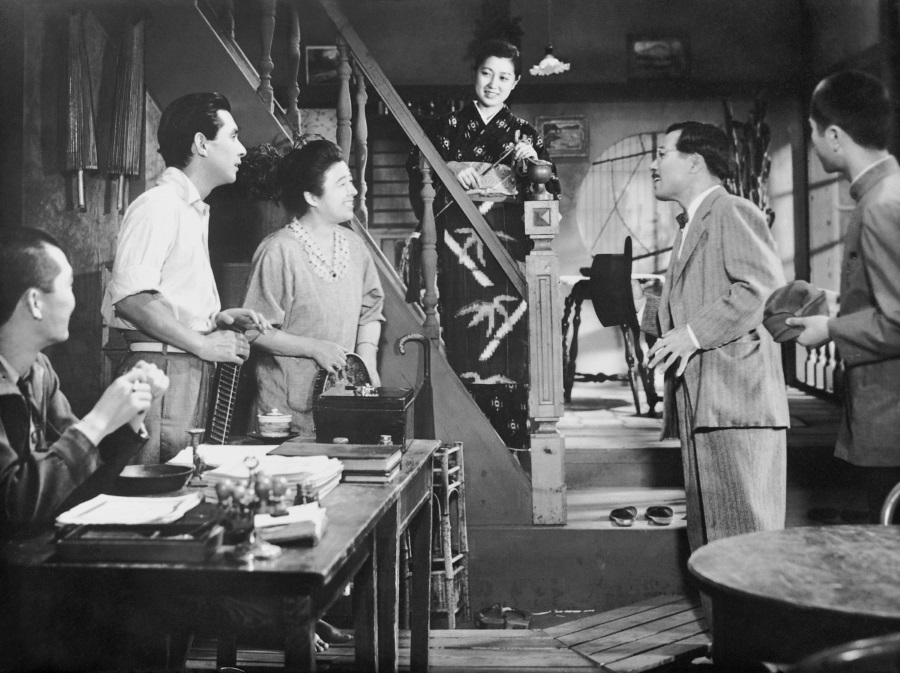
‘Port of Flowers’
Army (1944), Kinosuke’s fourth and final film of the war years, pushes the patriotic drumbeat to extremes and sneaks in a sly portrait of the nationalistic fervor that drove Japan to war. Spanning three generations and almost 80 years, it begins with lessons of duty to the Emperor and outrage over the international intervention that pressured Japan to return captured territory to China: “Someday we will avenge this indignation.” Generations of men pass on the ideals of hysterical nationalism to their children (without actually serving in combat themselves) until it comes down to the sickly son of Tomosuke Takagi (Chishu Ryu). “He’s always been a coward,” says both mother and father of the grown Shintaro (Kazumasa Hoshino), but when war is declared on China (to at last avenge the indignation from decades ago), Shintaro enlists to make his father proud.
Kinosuke presents patriotic zeal with such blind fervor that it borders on political cartoon. “A true Japanese would never admit that Japan could lose,” sputters an apoplectic Tomosuke to Sakuragi (Eijirô Tôno), a civilian industrialist who has volunteered his services in every conflict since he’s come of age. In hindsight it appears to be Kinoshita satirizing fervent nationalism and militarism as jingoism and hubris (especially from a man who has never faced battle) but at the time it was apparently accepted as a lesson in patriotism. That wasn’t what upset military censors, however. All four of Kinoshita’s wartime films are sensitive to the lives and emotions of his characters but Army ends with a potent show of emotional ambivalence to the proud sight of young men marching off to war. As Shintaro parades through town with his fellow soldiers, Kinoshita stays with his mother as she shuffles through alleys, stumbles and falls, and finally reaches the crowds with a sorrowful, almost panicked look on her face as she seeks out Shintaro. They looks they share before he marches out of town and out of frame are poignant but Kinosuke lingers on the mother, left behind and alone, already mourning for her lost son. He was not permitted to make another film until after the war. He returned with a vengeance.
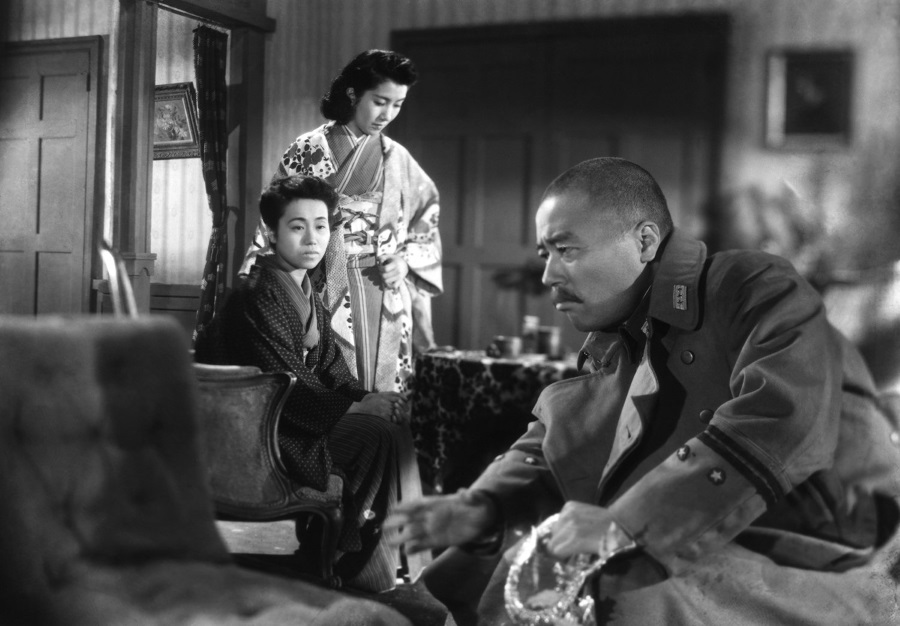
‘Morning for the Osone Family’
Morning for the Osone Family (1946) offers a scathing indictment of the culture that drove Japan into war through the intimate story of a family shattered by it. From its opening scenes of a family at Christmas singing “Silent Night,” it presents a family with an international education and an intellectual life that brands them as suspect in the heat of war. The eldest is jailed for daring to challenge the culture of military power and rampant nationalism, the next son is an artist drafted to fight, the daughter’s engagement to the son of an important industrialist is called off (her family is considered too subversive for such a respected clan), and the youngest falls under the spell of their hyper-patriot uncle, a military officer who preaches the gospel of Japanese superiority and the inevitability of Japanese triumph (never mind that the war in the Pacific has already turned against them). Through it all, the liberal mother (Haruko Sugimura) tries to respect the leadership of her brother-in-law (her husband died years ago) and keep the peace, but her silence only allows his arrogance to go unchecked until the war is over, the family is shattered, and the uncle’s base hypocrisy is revealed. When the family challenges what his philosophy has done for the country, he actually says (as translated in the English subtitles) “I was only following orders,” refusing to take responsibility for everything he advocated through the entire war.
While no longer under the supervision of the Japanese military, the post-war years had a different set of constraints imposed by the occupying American forces, which might explain why the bombings of Hiroshima and Nagasaki are never mentioned in the discussion of surrender and the destruction of Japan (seen only in the glimpses of the street outside the Osone home). The message of this film is clearly aligned with their interests and, like Kinosuke’s earlier films, has moments pure didactic speechifying. But also like those earlier films, Kinosuke’s interest is in the characters and their ordeals. Apart from the uncle, who is clearly the stand-in for national military arrogance. Whether you buy the hopeful coda (the “morning” of the title) or simply chalk it up to post-war propaganda, Kinosuke invests it with the passion of his liberal characters who dare to dream of pursuing their ideals once again.
Japanese with English subtitles. This collection comes from Criterion’s Eclipse line of bare-bones releases of movie collections. These are preserved films, not restored, and some sequences are heavily damaged with wear, scratches, and missing frames, but it is a small miracle that they survived at all. Each film is in its own slimline case with an essay by house writer Michael Koresky.
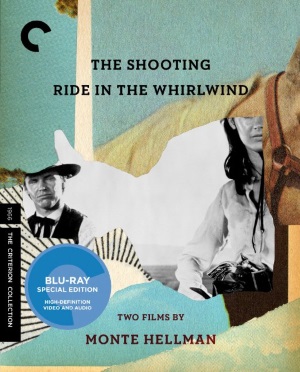 The Shooting / Ride in the Whirlwind (Criterion, Blu-ray, DVD) – Director Monte Hellman and actor Jack Nicholson met while making a pair of war films for Roger Corman in the Philippines. Nicholson was interested in all aspects of filmmaking, not just acting, and he and Hellman teamed up to produce a pair of low-budget westerns, one of them written by Nicholson and both of them directed by Hellman and starring Nicholson.
The Shooting / Ride in the Whirlwind (Criterion, Blu-ray, DVD) – Director Monte Hellman and actor Jack Nicholson met while making a pair of war films for Roger Corman in the Philippines. Nicholson was interested in all aspects of filmmaking, not just acting, and he and Hellman teamed up to produce a pair of low-budget westerns, one of them written by Nicholson and both of them directed by Hellman and starring Nicholson.
I used to call The Shooting (1967) the most existential western ever made. Seeing it again, I find it more haunting and elemental and savage, an almost abstract odyssey through a harsh, desolate desert landscape that wears its enigma proudly. Warren Oates takes the lead as a former bounty hunter hired to track a man by the mysterious Millie Perkins, who toys with Oates’ childlike partner (Will Hutchins), and Jack Nicholson co-stars as a sadistic, black-clad killer. It was written by Carole Eastman (under the pseudonym Adrien Joyce), who later earned an Oscar nomination for Five Easy Pieces, which also starred Nicholson. The spare cinematography burns bright and harsh in southwest sunlight that simmers the already edgy relations and Hellman directs the ambiguous script with always surprising flourishes, keeping the audience in the dark about the true nature of the odyssey as the characters talk around the conflicts as they warily eye one another. Nicholson is appropriately vicious in a preening sort of way and Oates is magnetic and commanding as a man driven by some fate beyond his comprehension. The film ends with more questions than answers, but it is never less than compelling.
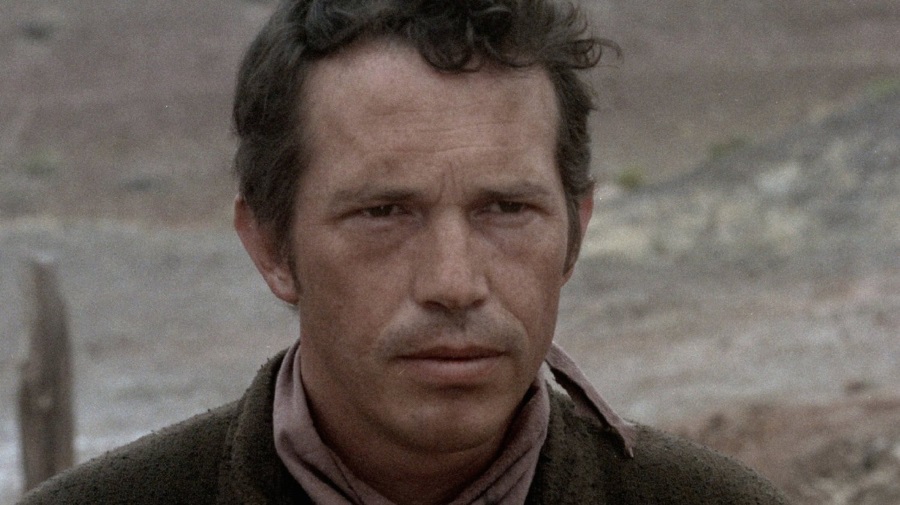
‘The Shooting’
Ride in the Whirlwind (1967), written by Nicholson, is only slightly more conventional, the story of a couple of cowboys (Cameron Mitchell and Nicholson) who run from a posse that mistakes them for bank robbers. In contrast to the harsh desert and heightened tension of The Shooting, this takes place in wooded hills and advances at a leisurely pace (much of the film is their nervous waiting in a farmhouse) in an easy, naturalistic style that belies the urgency and danger. Mitchell has an unforced authority as the older cowboy and Nicholson is excellent as the jumpy younger partner just trying to wrap his mind around their predicament.
The films, financed by Roger Corman (who had also produced Hellman’s Los Angeles stage production of “Waiting For Godot”), were well received at European film festivals but tossed into legal limbo when its European distributor went bankrupt and ended up being sold directly to American TV. If I’m not mistaken, they’ve never really had an official theatrical release in the U.S., but they were rediscovered in the 1970s, in part thanks to Nicholson’s success, and have screened in festivals, retrospectives, and repertory programs. They have also never had a high quality disc release (the DVD release a decade ago from VCI was respectable if unspectacular) until this Criterion double feature. This is the first time the films have looked this good for decades, either on home video or on film.
Hellman oversaw the new HD digital transfer, mastered in 4k from the original camera negatives, and produced new supplements for the disc. He provides commentary for the two films with film historians Bill Krohn and Blake Lucas and personally interviews producer Roger Corman and stars Millie Perkins and Harry Dean Stanton in new featurettes that play like conversations. Also includes interviews with Gary Kurtz and actor Will Hutchins and a visual essay on Warren Oates by Kim Morgan, plus a fold-out leaflet with an essay.
Calendar of upcoming releases on Blu-ray, DVD, Digital, and VOD
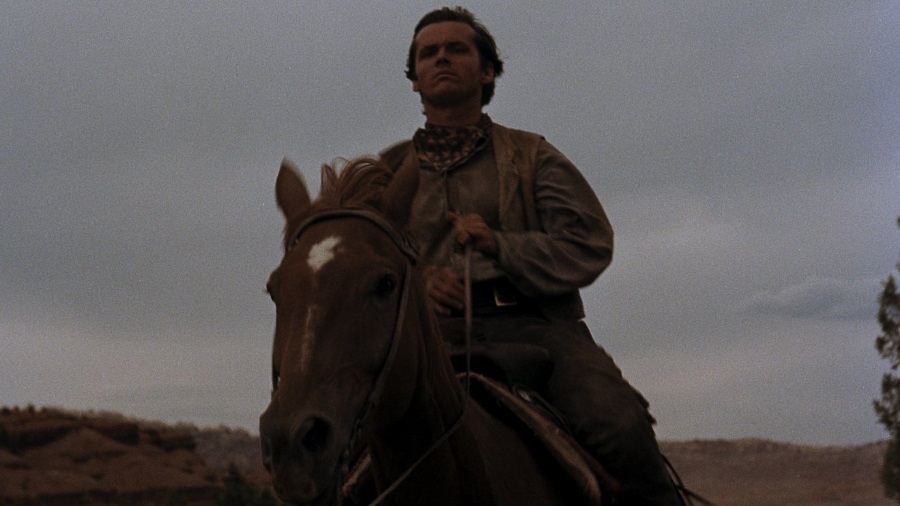
‘Ride in the Whirlwind’

